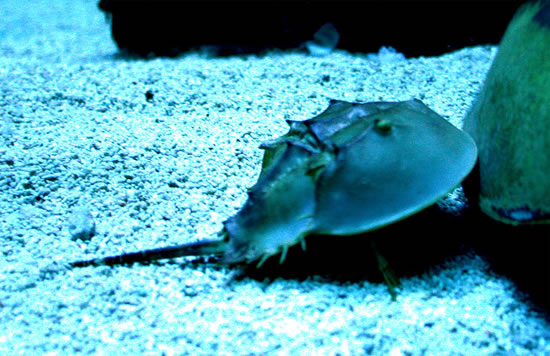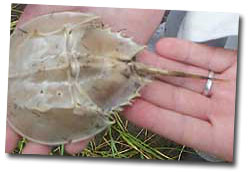Nope, Sorry, We Can't Fly Like the Pigs.
Horseshoe crabs used to be called "horsefoot
crabs" due to their shape. However,
throughout time, the name has switched to
what is now called the horseshoe crab.
Because horseshoe crabs have so many legs, they can actually swim upside down!
Horseshoe crabs are more closely related to spiders and scorpions than to actual crabs.
An underwater shot of a horseshoe
crab.
This organism can go up to one full year without feeding itself if the temperatures and salinity are too extreme!
The blood of a horseshoe is actually blue! It is blue because the blood is copper based.
If a horseshoe crabs loses a third of its blood it will still continue to live.
The horseshoe crab's tail may appear to be dangerous but in reality it is not used as a weapon.
Each time a horseshoe crab molts it gets ~25% larger!
Horseshoe crab blood.
It's blue!
In the 1990's, dried out horseshoe crabs were used as fertilizer for crops.
The female horseshoe crab is on average 20% larger than the male.
Molted juvenile crab shell.
To view the sources utilized in the website, click here.
To go back to the interactions page, click here.
To return back to the home page, click here.


